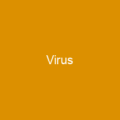Understanding HIV: The Invisible Enemy
HIV, or human immunodeficiency virus, is a stealthy invader that has been causing havoc for decades. Imagine it as a tiny, invisible army marching through your body, slowly but surely weakening your defenses until you’re left vulnerable to all sorts of diseases and infections. This article delves into the intricacies of HIV, from its transmission methods to how it affects the human immune system.
Transmission and Prevention
How does this invisible army get in? Primarily through sexual contact or blood exposure. But here’s a rhetorical question: Can you really protect yourself if you don’t know your status? Research has shown that HIV is not contagious during sex without a condom if the partner’s viral load is undetectable. This means that with proper protection, you can significantly reduce the risk of infection.
The Immune System Under Attack
Once inside your body, HIV targets vital cells in the immune system, including helper T cells and macrophages. It’s like a sniper picking off soldiers one by one until there are no more defenders left to fight back. The virus leads to low levels of CD4+ T cells, which can result in cell-mediated immunity loss and increased susceptibility to opportunistic infections.
Structure and Evolution
HIV is a member of the Lentivirus genus within the Retroviridae family. Its structure consists of a spherical capsid containing two copies of positive-sense single-stranded RNA, which codes for the virus’ nine genes. The viral envelope contains proteins from the host cell and relatively few copies of the HIV envelope protein, which is a major target for vaccine efforts.
Reproduction and Spread
The replication cycle begins with entry to the cell through adsorption of glycoproteins on its surface to receptors on the target cell’s membrane followed by fusion. Once inside, HIV RNA is injected into the cell, where it undergoes reverse transcription to produce double-stranded DNA, which is then integrated into the host chromosome. This process is followed by transcription of the viral genome and packaging into new viral particles.
Genetic Diversity
HIV can spread within the body via two pathways: cell-free spread (budding from one cell to another) or cell-to-cell spread (direct transmission between cells). Cell-to-cell spread is more efficient due to factors like virological synapse, polarized virus budding, and clustering of entry receptors. Genetic variability contributes to HIV’s high replication cycle and mutation rate, leading to the generation of many variants in a single infected patient.
History and Discovery
The history of HIV/AIDS began with reports of an exotic new disease in May 1981. The initial cases were cluster of injection drug users and gay men developing symptoms such as Pneumocystis pneumonia (PCP). The CDC formed a task force to monitor the outbreak, and the name ‘AIDS’ was introduced at a meeting in July 1982. The term GRID, which stood for gay-related immune deficiency, was initially used but later replaced by AIDS.
Testing and Diagnosis
HIV-1 testing involves initial screening with enzyme-linked immunosorbent assay (ELISA), followed by retesting if reactive, and confirmatory testing with polymerase chain reaction (PCR), western blot or immunofluorescence assay (IFA). Many governments and research institutions are involved in HIV/AIDS research, including behavioral health interventions and drug development.
Management and Eradication
The management of HIV/AIDS typically involves multiple antiretroviral drugs to treat the condition. However, studies have confirmed that transmission through sexual contact can be effectively eliminated when an HIV-positive individual maintains a consistently undetectable viral load, known as U=U or ‘Undetectable = Untransmittable.’ This principle was first proposed by the Swiss Federal Commission for AIDS/HIV in 2008 and has since been widely adopted.

Understanding the complexities of HIV is crucial in our ongoing battle against this invisible enemy. By staying informed and taking preventive measures, we can make significant strides in reducing its impact on individuals and communities worldwide.
You want to know more about HIV?
This page is based on the article HIV published in Wikipedia (retrieved on December 13, 2024) and was automatically summarized using artificial intelligence.





